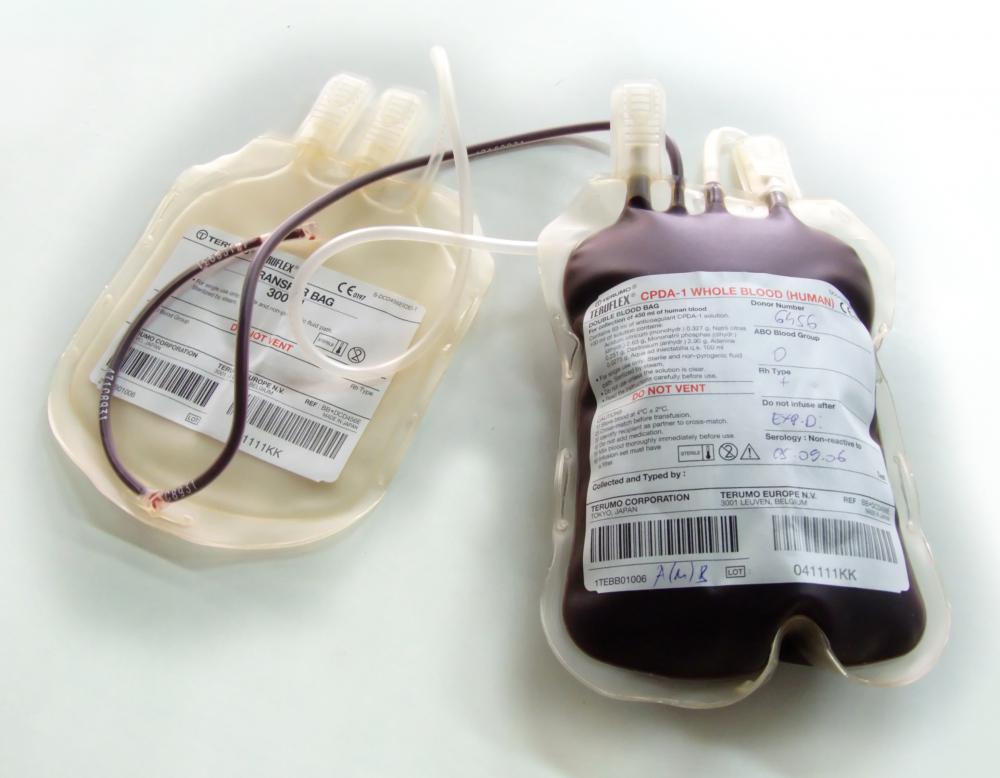At TheHealthBoard, we're committed to delivering accurate, trustworthy information. Our expert-authored content is rigorously fact-checked and sourced from credible authorities. Discover how we uphold the highest standards in providing you with reliable knowledge.
What Is the Role of Blood in the Human Body?
As blood in the human body circulates, oxygen and nutrients are delivered to cells while waste products are simultaneously collected and transported to organs that get rid of them. Additionally, blood has special cells that safeguard the body against disease-causing germs, thereby acting as armor against infection. One blood component seals damaged blood vessels to stop blood from leaking. Blood also plays a role in heat distribution. With these functions, blood acts as the transport, waste removal, defense, repair, and heat maintenance mechanism of the human body.
Veins, arteries, and capillaries are all a part of a network moving oxygen and nutrients through the body, and removing waste products. From the heart, the first blood vessel through which blood passes is an artery called aorta. Blood in the human body then passes through capillaries then through veins and back to the heart. The heart, blood vessels, and blood work together to make up the circulatory system, which supplies all the needs of body cells.

Blood in the human body contains red and white blood cells, platelets, and plasma. As blood passes through the lungs, oxygen is picked up by a substance called hemoglobin in red blood cells. The transport of nutrients and waste products, as well as the maintenance of body temperature, is the role played by plasma, a liquid that consists of water and other substances such as cholesterol. Plasma also serves as the medium for the transport of the other blood components in order for them to perform their functions.

White blood cells, particularly the lymphocytes and phagocytes, destroy disease-causing germs that are trying to cause infection in the body. Chemical compounds called antibodies are released by lymphocytes in order to weaken germs that will be engulfed by phagocytes. Lymphocytes also have the ability to recognize germs that have already caused infection, which prompts them to react more quickly if the same germs will try to cause an infection again. Neutrophils, eosinophils, basophils, and monocytes are all types of white blood cells that have specific roles in the fight against infections.

Platelets are a component of blood in the human body that are much smaller than both red and white blood cells. A substance that platelets release as they disintegrate, called thrombokinase or thromboplastin, is crucial in the clotting of blood. Another important role of platelets is the plugging of capillary leaks that may otherwise become an entry point for germs. Blood loss may also be prevented by this action.
AS FEATURED ON:
AS FEATURED ON:
















Discuss this Article
Post your comments